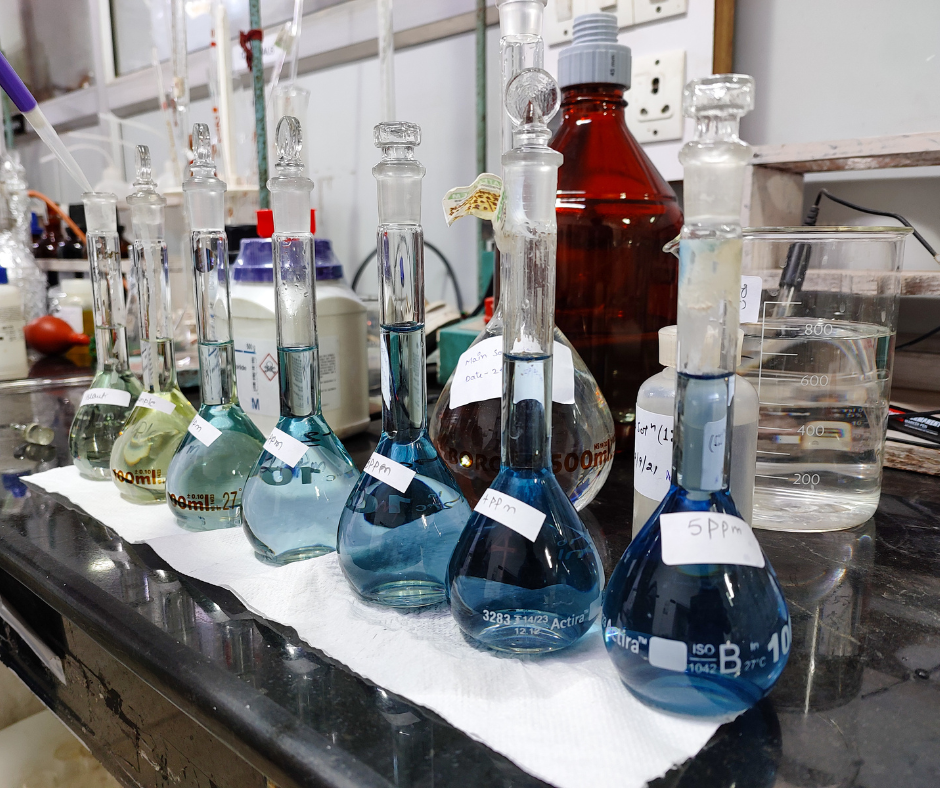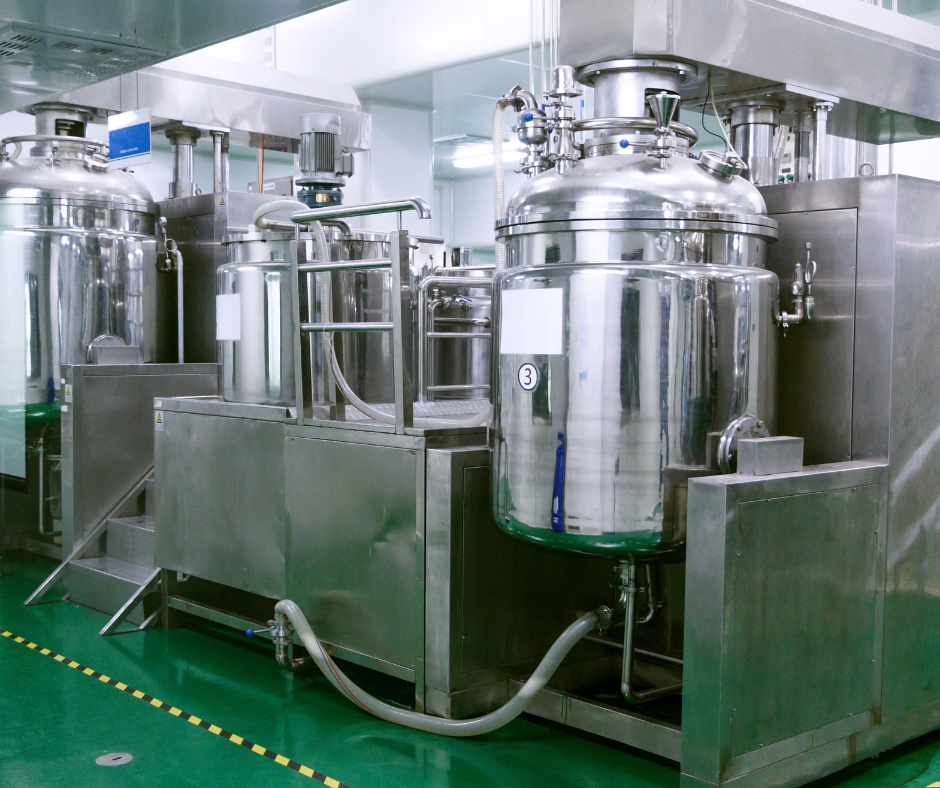Green chemicals, also known as sustainable or eco-friendly chemicals, are designed to have a lower environmental impact than traditional chemicals. They are produced using renewable resources, and they are less toxic and less harmful to the environment than their conventional counterparts. As the world becomes increasingly conscious of the need to protect the environment and reduce carbon emissions, there is a growing demand for green chemicals.
In this article, we will explore how businesses can capitalize on this growing demand.
- Develop and Market Green Chemicals
- Expand into New Markets
- Partner with Other Companies
- Educate Your Customers
- Stay Up-to-Date with Regulations
- Develop a Sustainable Supply Chain
- Measure and Report on Environmental Impact
- Foster a Culture of Sustainability
- How can Deskera Help You?
- Conclusion
- Related Articles
Develop and Market Green Chemicals
Developing and marketing green chemicals is a key strategy for businesses looking to capitalize on the growing demand for sustainable products. Green chemicals are chemicals that are produced using sustainable processes and raw materials, and that have a lower environmental impact than traditional chemicals. There are a number of steps businesses can take to develop and market green chemicals effectively:
Conduct Research and Development: The first step in developing green chemicals is to conduct research and development (R&D) to identify sustainable raw materials and manufacturing processes. This may involve collaborating with universities and research institutions to develop new technologies and processes. Businesses can also work with suppliers to identify sustainable raw materials and to develop partnerships that support sustainable sourcing.
Ensure Regulatory Compliance: It is important for businesses to ensure that their green chemicals comply with all relevant regulations and standards. This may involve obtaining certifications such as ISO 14001 or working with regulatory experts to ensure compliance with local, national, and international regulations.
Certify Products as Sustainable: Certifying products as sustainable can help businesses to differentiate themselves in the market and to demonstrate their commitment to sustainability. There are a number of third-party certifications available, such as the Cradle to Cradle certification or the Forest Stewardship Council (FSC) certification, that can help businesses to demonstrate the sustainability of their products.
Educate Customers: Educating customers about the benefits of green chemicals is an important part of marketing sustainable products. This may involve providing information on the environmental impact of traditional chemicals and highlighting the benefits of using green alternatives. Businesses can also work with customers to develop customized solutions that meet their specific sustainability goals.
Partner with Other Companies: Partnering with other companies in the industry can help businesses to access new markets and to leverage the strengths of other companies in the supply chain. This may involve forming strategic partnerships with suppliers or other manufacturers, or collaborating with industry associations to promote sustainability.
Utilize Sustainable Packaging: Using sustainable packaging is an important part of marketing green chemicals. This may involve using recycled materials or biodegradable materials for packaging, or developing packaging that is reusable or refillable. Sustainable packaging can help to reduce waste and to reinforce the sustainability message of the product.
Invest in Marketing and Branding: Investing in marketing and branding is critical for businesses that want to successfully market green chemicals. This may involve developing a strong brand identity that emphasizes sustainability, or investing in advertising and promotional campaigns that highlight the environmental benefits of the product. Businesses can also leverage social media and other digital marketing channels to reach new customers and to build brand awareness.
By developing and marketing green chemicals effectively, businesses can position themselves to take advantage of the growing demand for sustainable products and to create a more sustainable future.
Expand into New Markets
Expanding into new markets is a key strategy for businesses looking to capitalize on the growing demand for green chemicals. There are several steps businesses can take to successfully expand into new markets:
Conduct Market Research: The first step in expanding into new markets is to conduct market research to identify potential opportunities and challenges. This may involve analyzing market trends, assessing competition, and identifying target customers. Businesses can also conduct surveys and focus groups to better understand customer preferences and to gather feedback on their products.
Develop a Market Entry Strategy: Based on the findings of the market research, businesses can develop a market entry strategy that outlines the key steps and timelines for entering new markets. This may involve developing partnerships with local distributors or manufacturers, establishing a local sales presence, or leveraging e-commerce platforms to reach customers in new regions.
Adapt Products to Meet Local Needs: Adapting products to meet local needs is an important part of successfully entering new markets. This may involve modifying product formulations or packaging to meet local regulations or customer preferences. It is also important to ensure that product labeling and marketing materials are translated into local languages and that they comply with local regulations.
Establish Local Partnerships: Establishing local partnerships is a critical part of successfully entering new markets. This may involve working with local distributors or manufacturers to access new customers or to leverage local knowledge and expertise. Businesses can also collaborate with local industry associations or non-governmental organizations (NGOs) to gain a better understanding of local sustainability issues and to develop tailored solutions that meet local needs.
Leverage Digital Platforms: Digital platforms can be a powerful tool for expanding into new markets. E-commerce platforms can provide businesses with access to new customers in remote regions, while social media and other digital marketing channels can help to build brand awareness and to reach new audiences. Businesses can also use digital platforms to gather customer feedback and to improve their products based on customer insights.
Develop a Local Sales Presence: Developing a local sales presence is important for building relationships with customers and for demonstrating a commitment to the local market. This may involve establishing local sales offices or hiring local sales representatives who can provide customers with personalized service and support. Businesses can also participate in local trade shows and conferences to network with potential customers and to showcase their products.
By successfully expanding into new markets, businesses can access new customers and revenue streams, and can position themselves to take advantage of the growing demand for green chemicals around the world.
Partner with Other Companies
Partnering with other companies is a powerful strategy for businesses looking to capitalize on the growing demand for green chemicals. Collaborating with other businesses can help to leverage complementary strengths and resources, access new markets, and accelerate innovation. Here are some ways that businesses can partner with other companies:
Form Strategic Partnerships: Forming strategic partnerships with other companies can help businesses to leverage complementary strengths and resources. For example, a chemical company may partner with a renewable energy company to develop more sustainable manufacturing processes. By sharing knowledge and expertise, businesses can develop more innovative and sustainable solutions that can benefit both companies.
Collaborate with Suppliers: Collaborating with suppliers is another way that businesses can leverage partnerships to create more sustainable supply chains. By working with suppliers to source sustainable raw materials and to develop sustainable manufacturing processes, businesses can reduce their environmental impact and create a more sustainable product. Businesses can also collaborate with suppliers to create more efficient and sustainable logistics systems, which can help to reduce transportation-related emissions.
Join Industry Associations: Joining industry associations can help businesses to collaborate with other companies in the industry to promote sustainability and to address common challenges. For example, a chemical company may join an industry association that focuses on sustainable chemical production to share knowledge and best practices with other members. By working together, businesses can create a more sustainable and resilient industry that benefits everyone.
Participate in Collaborative Research and Development: Participating in collaborative research and development (R&D) projects can help businesses to accelerate innovation and to develop more sustainable solutions. For example, a chemical company may collaborate with a university or research institution to develop new sustainable chemicals or manufacturing processes. By sharing resources and expertise, businesses can develop more innovative and sustainable solutions that can benefit the entire industry.
Collaborate with Customers: Collaborating with customers is another way that businesses can leverage partnerships to promote sustainability. By working with customers to understand their sustainability goals and to develop customized solutions that meet their needs, businesses can create more sustainable products and services. For example, a chemical company may work with a customer to develop a more sustainable packaging solution that reduces waste and carbon emissions.
By partnering with other companies, businesses can access new resources, expertise, and markets, and can accelerate innovation in the development of sustainable solutions. Through collaboration, businesses can create a more sustainable and resilient industry that benefits everyone.
Educate Your Customers
Educating customers is a key strategy for businesses looking to capitalize on the growing demand for green chemicals. By educating customers about the benefits of sustainable chemistry and the role that green chemicals play in creating a more sustainable future, businesses can create a more informed and engaged customer base. Here are some ways that businesses can educate their customers:
Provide Information and Resources: Providing information and resources to customers is an important first step in educating them about sustainable chemistry. Businesses can create educational materials such as brochures, fact sheets, and online resources that explain the benefits of green chemicals and how they can be used in a wide range of applications. By making this information easily accessible, businesses can help customers to make informed decisions about their purchases.
Highlight Sustainability Certifications: Many customers are looking for sustainability certifications when making purchasing decisions. Businesses can highlight any certifications that their products have received, such as certifications from the Forest Stewardship Council (FSC) or the Cradle to Cradle Products Innovation Institute. These certifications indicate that products have been independently verified as meeting specific sustainability standards.
Showcase Sustainability Initiatives: Businesses can showcase their own sustainability initiatives to demonstrate their commitment to sustainability and to inspire customers to adopt more sustainable practices. For example, a chemical company may highlight its efforts to reduce water usage, waste, and greenhouse gas emissions in its manufacturing processes. By sharing this information with customers, businesses can help to build trust and establish themselves as leaders in sustainability.
Offer Sustainability Training: Offering sustainability training to customers can help to deepen their understanding of sustainable chemistry and how it can be applied in their businesses. Businesses can develop training programs that provide information on sustainability best practices and how to integrate green chemicals into existing processes. By providing this training, businesses can help to build a more informed and engaged customer base.
Host Sustainability Events: Hosting sustainability events is another way that businesses can educate customers about sustainable chemistry. These events can include workshops, seminars, and demonstrations that showcase the benefits of green chemicals and how they can be used in various applications. By bringing together experts, customers, and other stakeholders, businesses can create a forum for discussion and exchange of ideas on sustainable chemistry.
By educating their customers about sustainable chemistry, businesses can create a more informed and engaged customer base that is more likely to choose green chemicals and support sustainable practices. Through education, businesses can help to build a more sustainable future for everyone.
Stay Up-to-Date with Regulations
Staying up-to-date with regulations is a critical strategy for businesses looking to capitalize on the growing demand for green chemicals. Regulations can have a significant impact on the chemical industry, and businesses that are not in compliance may face fines, legal action, or reputational damage. By staying up-to-date with regulations, businesses can ensure that they are meeting regulatory requirements, reducing their environmental impact, and maintaining their competitive edge. Here are some ways that businesses can stay up-to-date with regulations:
Monitor Regulatory Changes: Monitoring regulatory changes is a critical first step in staying up-to-date with regulations. Businesses can subscribe to regulatory alerts from government agencies or industry associations to receive regular updates on changes to regulations. By monitoring these changes, businesses can stay informed about new requirements and deadlines, and can adjust their practices accordingly.
Participate in Regulatory Processes: Participating in regulatory processes is another way that businesses can stay up-to-date with regulations. For example, businesses can provide feedback on proposed regulations or participate in public consultations to help shape the development of regulations. By participating in regulatory processes, businesses can have a voice in the development of regulations and can help to ensure that regulations are practical and effective.
Conduct Regulatory Compliance Audits: Conducting regulatory compliance audits is an important way that businesses can ensure that they are meeting regulatory requirements. Businesses can conduct internal audits or hire external auditors to review their operations and ensure that they are in compliance with relevant regulations. By conducting these audits, businesses can identify areas of non-compliance and take corrective action to avoid penalties or legal action.
Engage with Regulatory Agencies: Engaging with regulatory agencies is another way that businesses can stay up-to-date with regulations. Businesses can meet with regulatory agencies to discuss regulatory requirements, seek guidance on compliance, or request exemptions or variances. By engaging with regulatory agencies, businesses can build relationships with regulators and better understand their requirements and priorities.
Participate in Industry Associations: Participating in industry associations is a valuable way that businesses can stay up-to-date with regulations. Industry associations often provide information on regulatory changes, best practices, and compliance guidance to their members. By participating in industry associations, businesses can access this information and collaborate with other businesses to develop industry-wide solutions to regulatory challenges.
By staying up-to-date with regulations, businesses can ensure that they are meeting regulatory requirements, reducing their environmental impact, and maintaining their competitive edge. Through monitoring regulatory changes, participating in regulatory processes, conducting compliance audits, engaging with regulatory agencies, and participating in industry associations, businesses can stay informed about the regulatory landscape and proactively adapt to regulatory changes.
Develop a Sustainable Supply Chain
Developing a sustainable supply chain is a critical strategy for businesses looking to capitalize on the growing demand for green chemicals. A sustainable supply chain is one that integrates environmental, social, and economic considerations into its operations, from the sourcing of raw materials to the delivery of products to customers. By developing a sustainable supply chain, businesses can reduce their environmental impact, improve social outcomes, and create long-term economic value. Here are some ways that businesses can develop a sustainable supply chain:
Assess Suppliers: Assessing suppliers is an important first step in developing a sustainable supply chain. Businesses can evaluate suppliers based on their environmental, social, and economic performance, using tools such as supplier questionnaires, audits, and certifications. By assessing suppliers, businesses can identify areas for improvement and work with suppliers to develop more sustainable practices.
Source Sustainable Materials: Sourcing sustainable materials is another key element of a sustainable supply chain. Businesses can look for materials that are responsibly sourced, such as those that are certified by organizations like the Forest Stewardship Council (FSC) or the Rainforest Alliance. They can also look for materials that are recycled or biodegradable, which can reduce waste and improve resource efficiency.
Reduce Environmental Impact: Reducing environmental impact is a critical component of a sustainable supply chain. Businesses can work to reduce the environmental impact of their operations, such as by reducing greenhouse gas emissions, minimizing water usage, and reducing waste. They can also work with suppliers to identify opportunities to reduce the environmental impact of their supply chain.
Enhance Social Outcomes: Enhancing social outcomes is another important aspect of a sustainable supply chain. Businesses can work to ensure that their suppliers respect human rights, promote fair labor practices, and provide safe working conditions. They can also work to support local communities and contribute to economic development.
Measure and Report Progress: Measuring and reporting progress is a critical component of a sustainable supply chain. Businesses can establish key performance indicators (KPIs) to track their progress towards sustainability goals, such as reducing greenhouse gas emissions or increasing the use of sustainable materials. They can also report on their sustainability performance to stakeholders, such as customers, investors, and regulatory agencies.
By developing a sustainable supply chain, businesses can reduce their environmental impact, improve social outcomes, and create long-term economic value. Through assessing suppliers, sourcing sustainable materials, reducing environmental impact, enhancing social outcomes, and measuring and reporting progress, businesses can create a more sustainable supply chain that benefits all stakeholders.
Measure and Report on Environmental Impact
Measuring and reporting on environmental impact is a critical strategy for businesses looking to capitalize on the growing demand for green chemicals. Measuring environmental impact can help businesses to identify areas for improvement and track their progress towards sustainability goals. Reporting on environmental impact can also help businesses to communicate their sustainability performance to stakeholders, such as customers, investors, and regulatory agencies. Here are some ways that businesses can measure and report on environmental impact:
Conduct Environmental Impact Assessments: Conducting environmental impact assessments is an important way that businesses can measure their environmental impact. Environmental impact assessments involve evaluating the potential environmental effects of a business's activities, products, or services. They can help businesses to identify areas where they can reduce their environmental impact and improve their sustainability performance.
Establish Key Performance Indicators: Establishing key performance indicators (KPIs) is another way that businesses can measure their environmental impact. KPIs are measurable goals that businesses can use to track their progress towards sustainability goals. Examples of environmental KPIs include greenhouse gas emissions, water usage, and waste generation. By establishing KPIs, businesses can set targets for improving their environmental performance and track their progress over time.
Use Environmental Management Systems: Using environmental management systems (EMSs) is another way that businesses can measure their environmental impact. EMSs are systematic approaches to managing environmental performance, which can help businesses to identify areas for improvement and track their progress towards sustainability goals. Examples of EMSs include the ISO 14001 standard and the Green Tier program in Wisconsin. By using EMSs, businesses can create a framework for improving their environmental performance and ensuring compliance with regulatory requirements.
Report on Environmental Performance: Reporting on environmental performance is a critical way that businesses can communicate their sustainability performance to stakeholders. Businesses can use sustainability reports, environmental impact statements, or other types of disclosures to report on their environmental performance. These reports can include information on environmental KPIs, progress towards sustainability goals, and initiatives to improve environmental performance. By reporting on their environmental performance, businesses can demonstrate their commitment to sustainability and engage with stakeholders on environmental issues.
By measuring and reporting on environmental impact, businesses can identify areas for improvement, track progress towards sustainability goals, and communicate their sustainability performance to stakeholders. Through conducting environmental impact assessments, establishing KPIs, using EMSs, and reporting on environmental performance, businesses can create a framework for improving their environmental performance and demonstrating their commitment to sustainability.
Foster a Culture of Sustainability
Fostering a culture of sustainability is a critical strategy for businesses looking to capitalize on the growing demand for green chemicals. A culture of sustainability is one that promotes environmental and social responsibility, and encourages employees to adopt sustainable practices in their daily work. By fostering a culture of sustainability, businesses can create a sustainable mindset throughout the organization, which can lead to better environmental and social outcomes. Here are some ways that businesses can foster a culture of sustainability:
Establish Sustainability Goals: Establishing sustainability goals is an important first step in fostering a culture of sustainability. Businesses can set targets for reducing their environmental impact, promoting social responsibility, and improving their sustainability performance. By establishing sustainability goals, businesses can create a framework for sustainable decision-making and encourage employees to adopt sustainable practices.
Train Employees: Training employees is another critical element of fostering a culture of sustainability. Businesses can provide training on environmental and social responsibility, sustainable practices, and the benefits of sustainability. By training employees, businesses can create a shared understanding of sustainability and empower employees to adopt sustainable practices in their daily work.
Engage Employees: Engaging employees is another important way to foster a culture of sustainability. Businesses can involve employees in sustainability initiatives, such as green teams, sustainability committees, or volunteer activities. By engaging employees, businesses can create a sense of ownership and commitment to sustainability, which can lead to better environmental and social outcomes.
Recognize and Reward Sustainable Behavior: Recognizing and rewarding sustainable behavior is another important way to foster a culture of sustainability. Businesses can recognize employees who demonstrate sustainable behavior, such as reducing waste, conserving energy, or promoting social responsibility. By recognizing and rewarding sustainable behavior, businesses can reinforce the importance of sustainability and encourage employees to adopt sustainable practices.
Incorporate Sustainability into Business Strategy: Incorporating sustainability into business strategy is another important way to foster a culture of sustainability. Businesses can integrate sustainability into their decision-making processes, such as product development, supply chain management, and marketing. By incorporating sustainability into business strategy, businesses can create a sustainable mindset throughout the organization and align business objectives with sustainability goals.
By fostering a culture of sustainability, businesses can create a sustainable mindset throughout the organization, which can lead to better environmental and social outcomes. Through establishing sustainability goals, training employees, engaging employees, recognizing and rewarding sustainable behavior, and incorporating sustainability into business strategy, businesses can create a culture of sustainability that benefits all stakeholders.
How can Deskera Help You?
Deskera's integrated financial planning tools allow investors to better plan their investments and track their progress. It can help investors make decisions faster and more accurately.
Deskera Books can assist you in automating your accounting and mitigating business risks. Deskera makes it easier to create invoices by automating many other procedures, reducing your team's administrative workload.
Deskera also offers a suite of integrated applications to help businesses manage their financials, inventory, and operations. Furthermore, other business aspects such as HR (Deskera People), CRM (Deskera CRM), and ERP are provided by Deskera. These could be crucial and can help short sellers keep track of their businesses and make better decisions.
Conclusion
In conclusion, the growing demand for green chemicals presents a significant opportunity for businesses to capitalize on sustainability and environmental responsibility. To successfully capitalize on this trend, businesses must take a holistic approach that encompasses all aspects of the organization, from supply chain management to product development, marketing, and customer education.
Some of the key strategies that businesses can use to capitalize on the growing demand for green chemicals include developing and marketing green chemicals, expanding into new markets, partnering with other companies, educating customers, staying up-to-date with regulations, developing a sustainable supply chain, measuring and reporting on environmental impact, and fostering a culture of sustainability.
By implementing these strategies, businesses can create a framework for sustainable decision-making that promotes environmental and social responsibility, improves sustainability performance, and aligns with the values and expectations of customers, investors, and other stakeholders. Ultimately, the businesses that successfully capitalize on the growing demand for green chemicals will be those that embrace sustainability as a core value and commit to making a positive impact on the environment and society.
Related Articles












